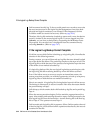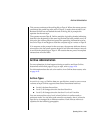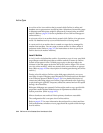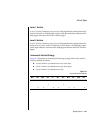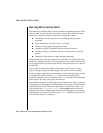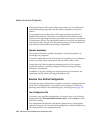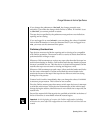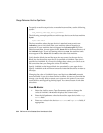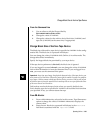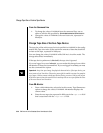
Operating OnLine 3-49
Plan the Archive Schedule
Minimize Archive Time
You can reduce the number of disk pages that must be copied during an
archive by storing explicitly created temporary tables in a dedicated dbspace
and then dropping that dbspace before you archive.
For example, suppose an application in your environment uses temporary
tables to load data. If you load 250,000 rows into a temporary table and then
later delete that temporary table, the pages that were allocated to the table are
archived. If, however, you create the temporary table in a separate dbspace
dedicated to temporary tables and then drop the dbspace before the archive,
none of the pages is archived.
Online Archives
If the archives must be created online, be aware of some of the inconve-
niences associated with the online archive. Online archive activity forces
pages to remain in the physical log until the archive process, tbtape, has
verified that it has a copy of the unchanged page. In this way, the online
archive can slow checkpoint activity, which can contribute to a loss in
performance.
Single Tape Drive
If you are creating an archive with the only available tape device, you cannot
back up any logical log files until the archive is complete. If the logical log
files fill during the archive, normal OnLine processing halts.
This problem cannot occur if you create your archives in quiescent mode. But
if you want to create online archives with only one tape device, you can take
the following precautions:
■ Configure OnLine for a large logical log.
■ Store all explicitly created temporary tables in a dedicated dbspace
and drop that dbspace before each archive.
■ Create the archive when database activity is low.
■ Free as many logical log files as possible before you begin the
archive.




